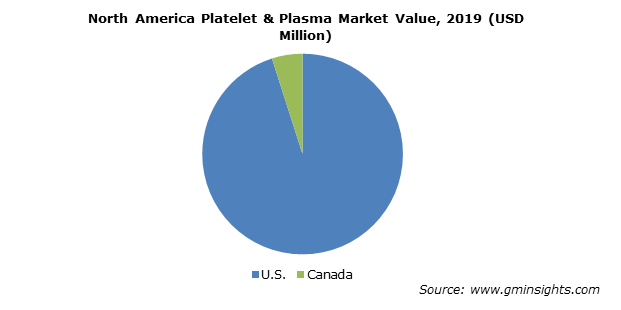Platelet and plasma market to derive commendable returns via liver disease treatment application, global industry to be characterized by a slew of R&D activities over 2018-2024
Publisher : Fractovia | Published Date : 2018-08-31Request Sample
Platelet and plasma market has gained immense traction in the last half a decade, driven by a plethora of R&D programs being undertaken in its wake. Recently, the U.S. Defense Department announced a grant of $3.5 million to the Cambridge biotech firm, Platelet BioGenesis, for the development and refinement of a process that produces blood platelets from stem cells. The military believes that this is a technology that will become an essential life saver in the battlefield as well as in civilian casualties.
India Platelet and Plasma Market, By Component, 2013 – 2024, (USD Million)

Platelet is a critical component in blood that assists in blood clotting. The grant is of significance in the platelet and plasma market as it will act a contribution to the development of donor independent, fully functional platelets. The synthetic development of platelets is being encouraged rapidly of late, as unlike platelets sourced from human blood, synthetically developed platelets can last longer, are free from disease and much cheaper which is a major blessing for platelet and plasma industry, as platelets cannot be frozen and have a rather short shelf life.
The military has also received a boost from the U.S. Food and Drug Administration for the treatment of wounds as it has approved the use of an experimental freeze-dried blood plasma. The freeze-dried blood plasma is being hailed as a lifesaver in war zones as such blood plasma does not need refrigeration or thawing which is a big deterrent in the case of regular frozen blood plasma.
Apart from widespread military usage, plasma and platelets form a kind of a basic infrastructure for medical treatments. Right from treatment of severe injury to side effects of cancer treatment, the demand for platelets has been soaring high. Due to the vivid therapeutic and prophylactic applications of platelets, platelets and plasma market size was dominated by the platelet segment in 2017 with a revenue of $3.6 billion, a trend that is expected to be continued over 2018-2024.
According to the American Red Cross, a subject needs platelets every 30 seconds in the United States. The World Health Organization also claims that the shortage of blood and blood products puts millions of lives at risk every year and suppliers have been estimated to provide nearly 835,000 platelet bags of platelets per annum. An ever-growing geriatric population base will encourage governments to not only invigorate blood donation but to develop new technologies that can synthesize platelets without human donors thus augmenting platelet and plasma industry trends further.
The human blood consists of roughly 55% of plasma by volume and has unparalleled healing properties. Plasma derived therapies are being used to treat an expanding list of life threatening disorders adding greater traction to platelet and plasma industry especially with plasma-fractionation techniques being on the rise. As per estimates, platelet and plasma market share from plasma is anticipated to witness a growth rate of 2.1% over 2018-2024. Immunoglobulin, which is used for patients suffering from primary and secondary immunodeficiency disorders and viral and bacterial infections has emerged as a primary driver for platelet and plasma market.
Intravenous immunoglobulin is used in a range of neurological diseases including post-polio syndrome, multiple sclerosis, chronic fatigue syndrome and neuropathic pain. A recent study indicated that intravenous immunoglobulin can have significant value in the treatment of Alzheimer’s. If the study is confirmed, the therapeutic market is expected to expand even further.
Driven by the incredible demand for blood products pervading borders, platelet and plasma market outlook has observed a transformational shift lately. A transpacific trade of human blood plasma between China and the Unites States goes to demonstrate the point very clearly. According to the World Health Organization, one in 13 people in China suffer from some form of chronic hepatitis, putting them at a high risk of developing liver cancer of cirrhosis. Plasma, especially albumin, a protein contained in plasma, is an essential component in the treatment of liver disease.
Chinese patients consumed around 300 tons of serum albumin in 2016 which is half of the global consumption. Donors in the U.S. are paid a lucrative fee while in China, paid plasma collection has been deterred by scandals and stigma. Quite overtly, China has today emerged as one of the largest importers of blood plasma.
With the global demand for blood components and related procedures increasing every year, the overall platelet and plasma market is expected to traverse a highly remunerative growth path in the forthcoming years. A report by Global market Insights, Inc., claims platelet and plasma industry size to be pegged at USD 6.5 billion by 2024.